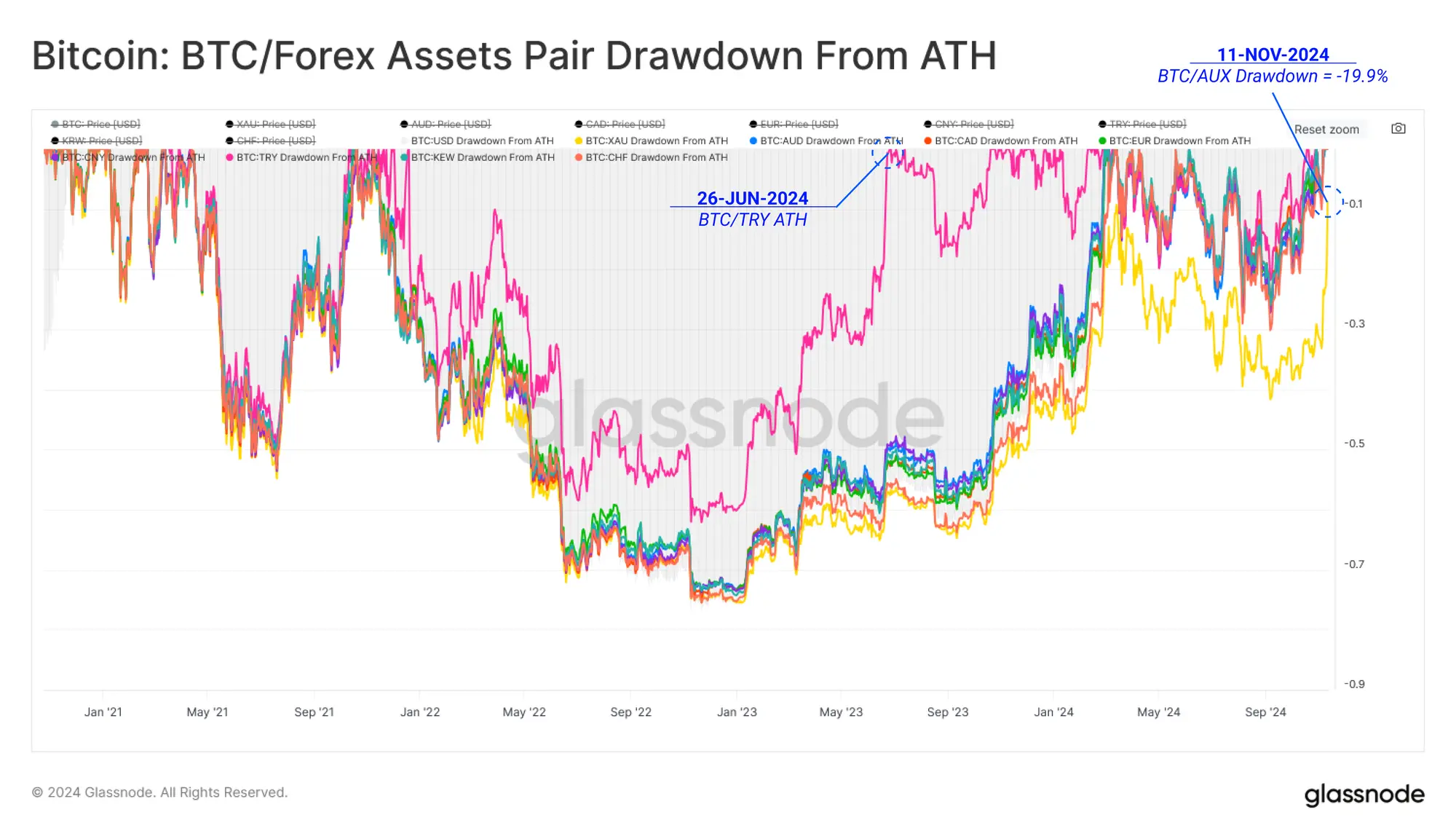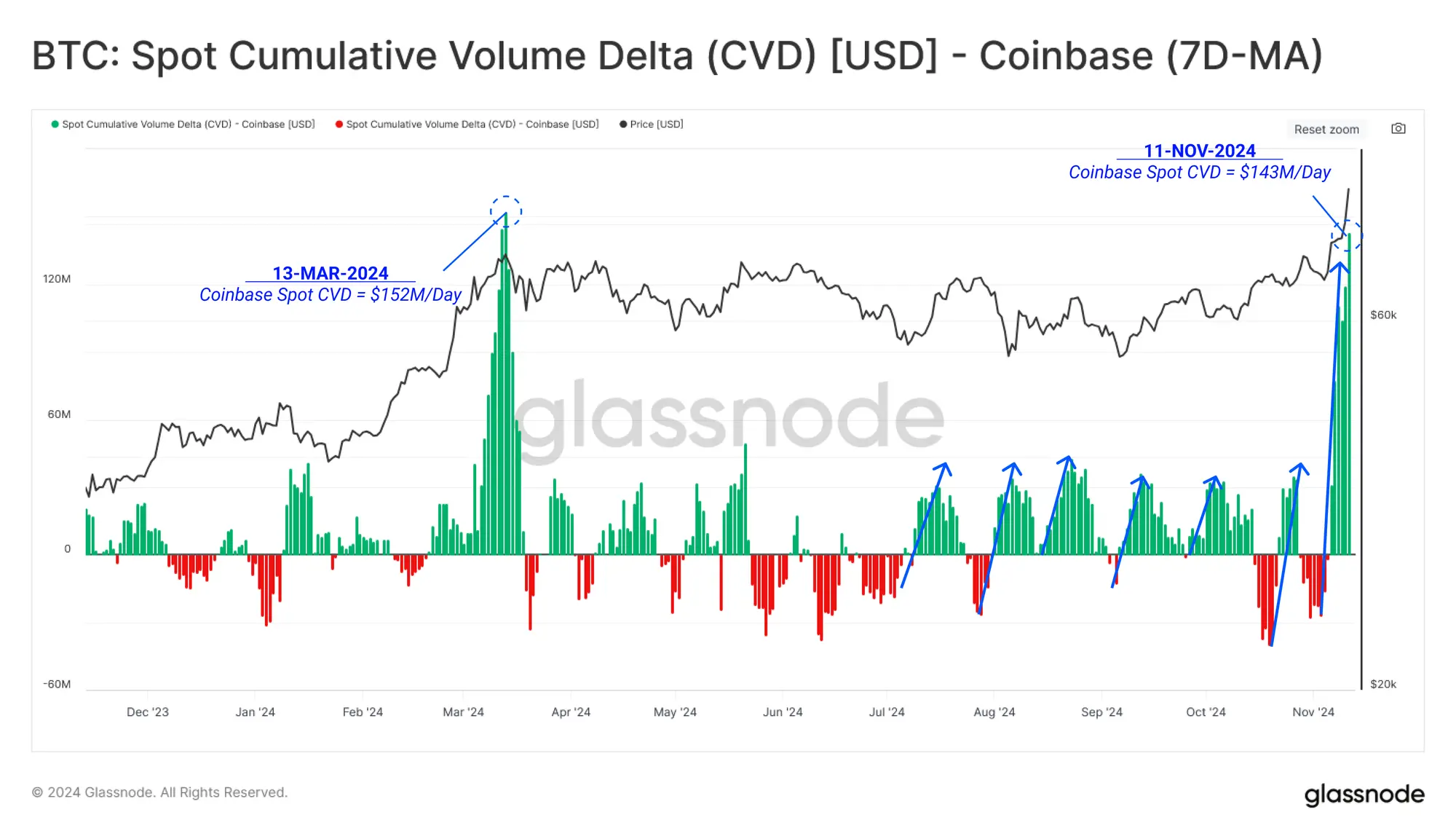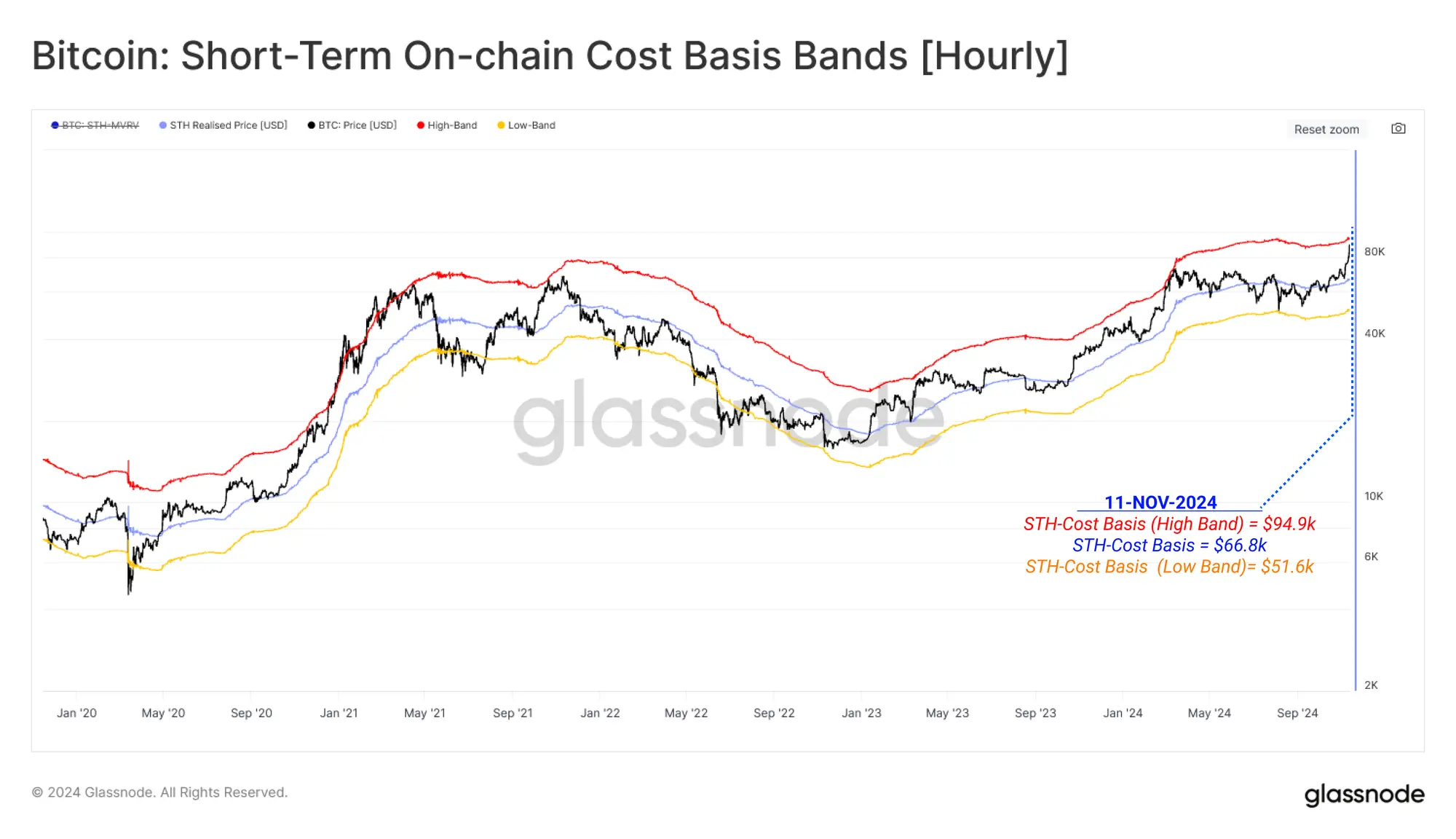Author: Lawrence, Mars Finance
summary
- This article explores Bitcoin’s recent run to new all-time highs and analyzes the factors driving this upward momentum, particularly the strong demand for perpetual futures in the spot market.
- We analyze the impact of the recent US election on institutional inflows, highlighting how open interest in US spot ETFs and CME futures has surged as spot holding strategies have gained popularity.
- The ATH discovery phase is evaluated with a focus on the percentage of supply in profit and the market dynamics that accompany profitability exceeding 95% for a long period of time.
- We drill down into the on-chain cost basis bands to track demand momentum, illustrating how the proximity of these bands can signal periods of strong market demand.
- Finally, we checked the realized profit levels and noted clear profit-taking activity, but showed that current levels are still below previous all-time highs, suggesting that there is room for continued growth.
Post-election surge
After the results of the US presidential election were announced, the market generally believed that the Trump administration would take a more friendly stance towards cryptocurrencies, which brought positive signals to the cryptocurrency market and pushed Bitcoin to a new all-time high. All major BTC:FX pairs hit new all-time highs.
This chart shows the retracement from the ATH for Bitcoin (BTC) against various fiat currencies and Gold (XAU). Notably, the BTC:TRY (Turkish Lira) pair was the first to hit an ATH on June 26, 2024, ahead of the other pairings. On November 6, 2024, almost all BTC:FX pairs hit new highs, with the exception of BTC:Gold, which is still about 19.9% below its ATH despite Bitcoin’s current valuation of $886,000.
Despite Bitcoin’s current USD valuation of $886K, the BTC:Gold pair is still around -19.9% below its ATH.

Historically, U.S. presidential elections have had a significant impact on Bitcoin’s market performance, with both price and realized market capitalization (which represents the accumulated wealth invested in the Bitcoin network) experiencing notable changes.
2016 election (Republican government):
- Real capital surged 20.3% before the election and rose another 55.5% after the election.
- Prices rose 34.7% before the election and surged 124.6% in the months after the election.
2020 Election (Democratic Government):
- Real capital inflows grew by 16.5% before the election and by 196.3% after the election.
- Prices rose 35.4% before the election and soared 306.8% after the election.
2024 Election (Republican Administration to Present):
- Before the election, real capital increased by 13.3%, but after the election it rose slightly by 2%.
- Before the election, prices were up 10.1%, and after the election (to date), they are up 27.9%.
The current cycle therefore reflects the more muted reactions seen in the run-up to previous elections, albeit still very bullish. The market is currently adapting to changes in crypto policy that are likely to occur in the coming years.

Bitcoin continued its recent momentum to set new all-time highs, posting its largest weekly chart gain ever, up to $116,000. The rally significantly exceeded the historical weekly trend, almost five times the statistical upper limit (1 standard deviation), indicating that the bullish momentum is unprecedentedly strong.
This unusual price action reflects market optimism, with participants viewing the expected regulatory environment as a catalyst for continued capital inflows.

Spot volume-driven breakout
The chart highlights the daily cumulative volume delta (CVD) for the Coinbase spot market, showing a notable rise in buy-side pressure. Recently, daily spot CVD reached $143 million, approaching the previous high of $152 million set on March 13.
Each Bitcoin rally since July has been accompanied by a significant increase in buy-side interest on Coinbase, indicating strong spot market demand on one of the largest exchanges in the U.S. This sustained interest from investors indicates that market participants are becoming increasingly bullish on digital assets and reinforces the spot-driven nature of the current rally.

Following strong buying pressure in the Coinbase spot market, the recent rally has also driven a large inflow into US spot ETFs, with assets under management increasing by $6.8 billion in the past 30 days. This growth outpaced the $7.6 billion increase in CME futures open interest, indicating a clear preference for spot investments through ETFs.
The correlation between ETF inflows and CME open interest highlights the dominance of spot holding strategies. However, stronger ETF demand highlights the shift toward direct spot exposure during this market rally.

Typically, spot market demand continues to grow, and perpetual futures will also show similar positive momentum. The recent peak in premiums in the perpetual market - reaching $1.59 million per hour on November 12 (7-day average of $392,000 per hour) - reflects strong speculative demand.
However, this level is still below the highs of mid-March, further confirming the assumption that the current rally is mainly driven by spot. Demand in the perpetual contract market is modest but significant, highlighting that spot demand, rather than leveraged speculation, is the main driver of the price surge so far.

Price Discovery Phase
Bitcoin has entered a new phase of price discovery, with all circulating supply turning into profit. This chart shows the percentage of profit-making supply, and the number of consecutive days per month that this metric is above 95%.
Historically, this phase lasts about 22 days before a correction occurs, with more than 5% of supply trading below the initial purchase price. The current rally has maintained this high profit level for 12 consecutive days, highlighting strong market sentiment but also hinting at a possible future correction based on past patterns.

This chart examines the cumulative realized profits during the new ATH discovery phase, highlighting the scale of profit-taking activity. Historically, realized profits have ranged between $30 billion and $50 billion per month before demand dries up, often signaling a cool-down period.
We are currently sitting at $20.4 billion in profits since entering the latest ATH exploration phase. While the profit taking has been significant, it is still below the all-time peak, suggesting there is further room to move higher before reaching potential demand exhaustion.

Price Discovery Bands
As we enter a new ATH discovery phase, it becomes critical to determine the most effective price model to navigate this intense market activity. This chart shows the cost basis for new investors as well as the statistical upper and lower bounds (±1 standard deviation).
During the ATH discovery phase, as new investors enter the market at higher prices, the price of Bitcoin often approaches and tests the upper limit multiple times, driven by strong demand momentum. Currently, the price of Bitcoin is $879,000, just below the upper limit of $949,000. Monitoring the proximity to these bands, especially the upper and middle bands, can highlight periods of strong market demand, reflecting the enthusiasm of new capital to enter the market during the rally phase.
Currently, the spot price of Bitcoin is $879,000, just below the upper limit of $949,000. Monitoring the proximity of these ranges, especially the upper and middle limits, can highlight when periods of high demand will slow down and when prices will be high enough for many existing holders to increase selling pressure.

The current average realized profit volume is approximately US$1.56 billion per day, of which long-term holders contributed US$720 million, accounting for 46% of the total.
Despite the increase in profit-taking activity, the cumulative realized profit volume is about half of what was recorded during the previous cyclical ATHs (breaking $3 billion/day, with more than 50% attributed to long-term holders). This again suggests that if demand continues to flow in, there may be further room to rise, and more seller pressure is needed before typical peak profit realization levels are reached.

Summarize
This brief analyzes Bitcoin's recent all-time highs, which were driven by strong spot market demand, primarily through US spot ETFs. Post-election, a surge in institutional investor interest has seen a massive influx of funds into CME futures and ETFs, favoring spot investment and driving Bitcoin into a new ATH discovery phase. Currently, over 95% of the circulating supply is in profit, which is usually followed by a large amount of profit-taking.
Currently, almost all of the circulating BTC supply is in profit, although this has been offset by a significant increase in profit-taking activity. While actual profits for both short-term and long-term holders have increased, they are still below previous highs, which may indicate that many investors are willing to wait for higher prices.















